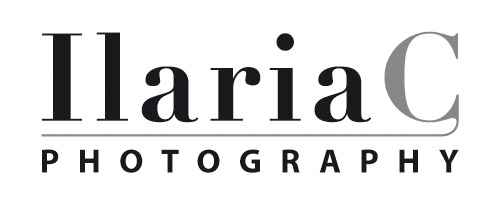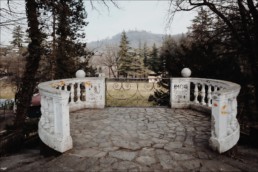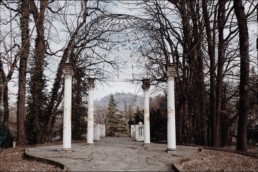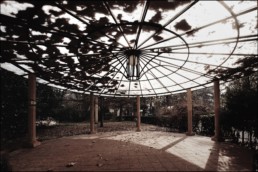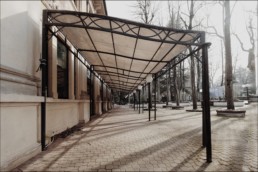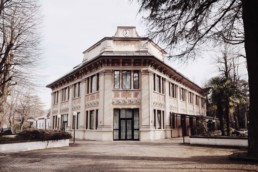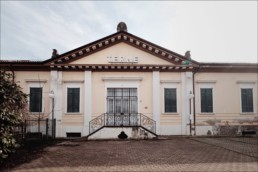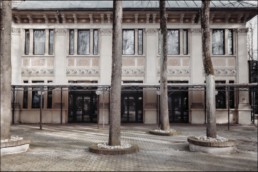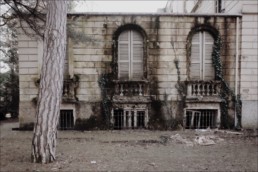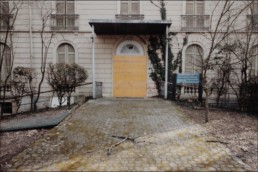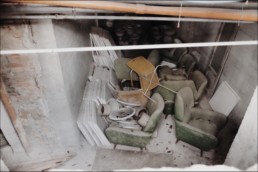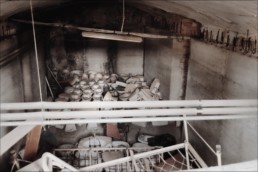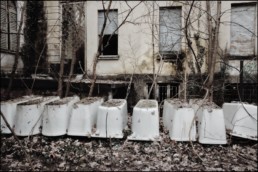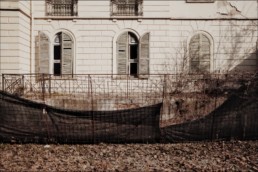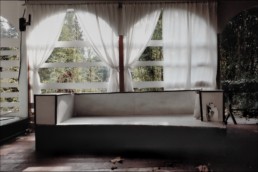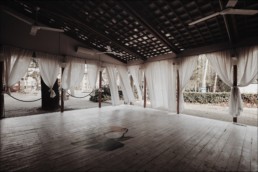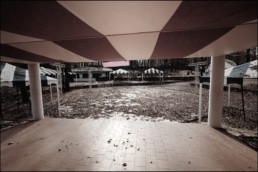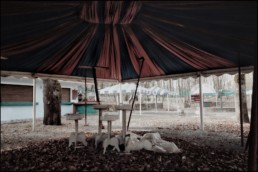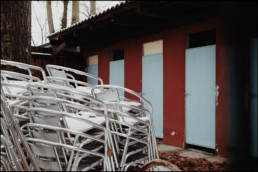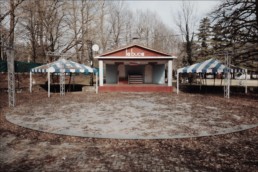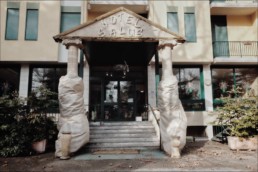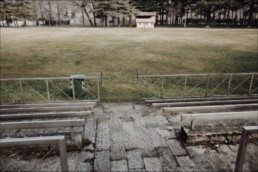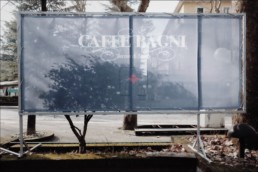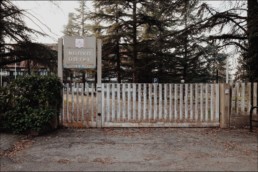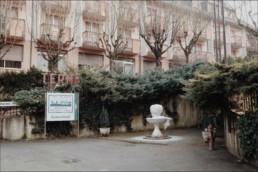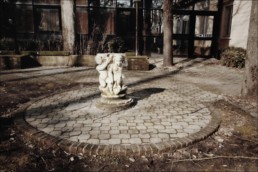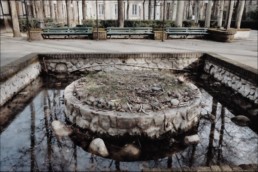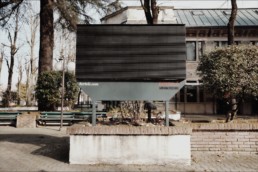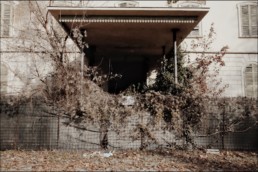Salice Terme 2020
Le Terme di Salice si avvalgono di acque provenienti dalla Fonte Sales, le cui proprietà curative erano note già ai tempi dei romani.
Intere legioni si fermavano lì per curarsi e riposarsi dopo le campagne in Gallia o nel Nord Europa e anche Giulio Cesare, cui è stata dedicata una fonte, pare frequentasse Salice spesso e volentieri per curarsi una brutta psoriasi.
A partire dagli anni ‘30 ma soprattutto nel Secondo Dopoguerra, Salice Terme letteralmente esplose. Complice anche la decisione dei privati di vendere la struttura allo Stato, che a partire dagli anni ‘50 cominciò a inviare i mutuati, migliaia di ammalati di dermatite o con problemi respiratori.
Dietro al successo di Salice non c’erano solo la posizione privilegiata e i costi contenuti, ma anche un fiorire continuo di manifestazioni estive di ogni natura che attiravano gente.
«A Salice si sogna e si guarisce», così scriveva la poetessa Ada Negri, alla quale è dedicata una quercia secolare del Parco.
Concerti di prestigio, serate danzanti, manifestazioni sportive. Concorsi di bellezza e un premio cinematografico capace di richiamare in riva allo Staffora, il torrente che bagna Salice, il meglio di Cinecittà.
I turisti trascorrevano nella cittadina della Valle Staffora rilassanti periodi di vacanza. Era la Salice del ritiro della Juventus e dei concorsi ippici, degli imprenditori che acquistavano ville in mezzo al verde.
Alla fine degli anni ’80 e nei ’90, i miei anni del Liceo e dell’Università, questi luoghi sono stati anche l’indiscusso fulcro della mia vita sociale: il ritrovo del venerdì e del sabato sera con gli amici era proprio sulla panchina a lato della pizzeria Il Gabbiano, proprio di fronte all’ingresso delle Terme.
I caffè gremiti, il gelato della Sala, dove trovare un tavolo libero per il nostro gruppo era sempre un’impresa.
La musica dal vivo in ogni locale, i motociclisti radunati a decine ogni domenica al crocevia del paese, le discoteche che ogni weekend richiamavano arrivi costanti da almeno due province, il torrente Staffora (oggi poco più di un rigagnolo) ancora colmo d’acqua anche in estate, le feste a casa degli amici sui colli di Salice, gli spalti pieni al concorso ippico annuale.
E ancora: a dicembre il consueto tour degli alberi di Natale delle ville e il vin brûlé alla mezzanotte del 25, la pizzetta di Zambelli a metà pomeriggio dopo una giornata in piscina o sui colli, il tradizionale ritrovo in panchina dopo il Gran Premio di Formula 1, le grigliate di gruppo davanti alle partite dei mondiali, con la tv attaccata alla prolunga e posizionata in giardino. Luoghi che hanno fatto da sfondo ad anni indimenticabili, e che rivedere così desolati, a distanza di vent’anni, fa sembrare quel tempo come un disegno sempre più sbiadito.
A quel tempo il valore della struttura venne stimato attorno ai 28 miliardi di lire, ma da quel momento in poi si registrarono solo perdite, nonostante i numerosi sforzi messi in campo da impresari intenzionati a risollevare le sorti delle sorgenti sulfuree e salsobromoiodiche scoperte da Giulio Cesare.
È difficile immaginare che il centro termale odierno, reduce da un fallimento lungo e doloroso, abbandonato a se stesso e all’incuria, sia stato per tanti anni uno dei luoghi più chic della Lombardia.
Una prima avvisaglia che qualcosa nelle terme di Salice non stava girando per il verso giusto la si ebbe a metà anni ‘90 con la decisione dell’ex governo Dini di privatizzare le terme di Stato. Nel 2003 le Terme di Salice conclusero un contratto con il club Juventus per ospitarne il ritiro estivo, ma nel giro di 12 mesi l’affare saltò poiché emerse un buco nei conti da oltre quattro milioni.
Fra polemiche e annunci di nuove iniezioni di liquidità, l’agonia delle Terme di Salice si è trascinata fino all’ inverno 2017, quando dopo l’ennesimo tentativo di rilancio di una cordata romana, il centro è stato dichiarato fallito a tutti gli effetti.
Che durante la stagione invernale si registri un calo delle presenze di turisti, è sempre stata una costante per la cittadina, ma commercianti ed albergatori in molti casi si arrendono e chiudono.
Il sindaco garantisce che rispetto a quanto fatto in passato, assicureranno massima collaborazione a futuri acquirenti, seri e capaci, che presenteranno progetti mirati ed intelligenti per salvare le terme.
Il 17 marzo 2020 si terrà la terza asta, e l’intero patrimonio che comprende Terme, Grand Hotel, Parco di Salice, l’antico maneggio, concessioni minerarie per l’estrazione delle acque e licenze, verrà battuto a 2,8 milioni di euro con possibilità al ribasso sino a 2,1 milioni.
___________________________________________________________
english version
Salice Terme in Italy, in the region of Oltrepo Pavese, uses thermal waters from the Sales spring, whose healing properties were already known in Roman times.
Whole legions stopped there to heal and rest after the campaigns in Gaul or in Northern Europe and even Julius Caesar, to whom a source was dedicated, seems to frequent Salice Terme often and willingly to treat a bad psoriasis. Starting from the thirties, but especially in the post-war period, Salice Terme literally exploded.
Also the decision of private individuals to sell the facility to the State, which from the 1950s began to send us mortgages, thousands of patients with dermatitis or respiratory problems.
“We dream and heal in Salice,” wrote the poet Ada Negri, to whom a centuries-old oak tree from the park is dedicated.
Tourists spent relaxing holidays in the town of Staffora valley.
Prestigious concerts, dance evenings, sport events. Beauty contests and a cinematographic award capable of bringing the best of Cinecittà to the bank of the Staffora river.
It was the place of the Juventus football club retreat and of the horse shows, of the businessmen who bought villas in the countryside.
In the late 80s and 90s, my high school and College years, these places were also the undisputed fulcrum of my social life: the meeting on Friday and Saturday evening with friends was right on the bench beside of the Il Gabbiano pizzeria, right in front of the entrance to the spa. The packed cafes, the ice cream in the Sala cafe, where finding a free table for our group was always a challenge. Live music in every club, motorcyclists gathered in dozens every Sunday at the crossroads of the town, discos that every weekend attracted constant arrivals from at least two provinces, the Staffora torrent (today little more than a stream) still full of water also in summer, the parties at friends home on the hills of Salice, the stands full at the annual horse show. And again: in December the usual tour of the Christmas trees of the villas and the mulled wine at midnight on the 25th, the Zambelli Pizza in the mid afternoon at the end of a day in the pool or on the hills, the traditional meeting on the bench after the Grand Prix Formula 1, the group barbecues in front of the World Cup matches, with the TV attached to the extension and positioned in the garden. Places that have been the backdrop for unforgettable years, and that seeing them so desolate, twenty years later, makes that time seem like an increasingly faded drawing.
At that time the value of the structure was estimated at around 28 billion lire, but from that moment on only losses were recorded, despite the numerous efforts put in place by impresarios willing to revive the fate of the sulphurous and salso-bromo-iodine sources discovered by Julius Caesar. .
It is difficult to imagine that today’s spa, after a long and painful failure, abandoned to itself and neglect, has been for many years one of the most chic places in Lombardy.
A first sign that something was not going right in the Salice spa was in the mid-nineties with the decision of the former Dini government to privatize the state spa.
Thirteen centers, in total, including that of Salice, were privatized.
In 2003 the Terme di Salice concluded a contract with Juventus football club to host the summer retreat, but within 12 months the deal jumped as a hole in the accounts of over four million emerged.
Amid controversy and announcements of new liquidity injections, the agony of the Terme di Salice dragged on until winter 2017, when after yet another attempt to relaunch a Roman consortium, the center was declared bankrupt in all respects.
The mayor guarantees that compared to what has been done in the past, they will ensure maximum collaboration for future buyers, serious and capable, who will present targeted and intelligent projects to save the spa.
The third auction will be held on March 17, 2020, and the entire heritage that includes Terme, Grand Hotel, Parco di Salice, the ancient stables, mining concessions for water extraction and licenses, will be sold for 2.8 million euro with a downward possibility of up to 2.1 million.
